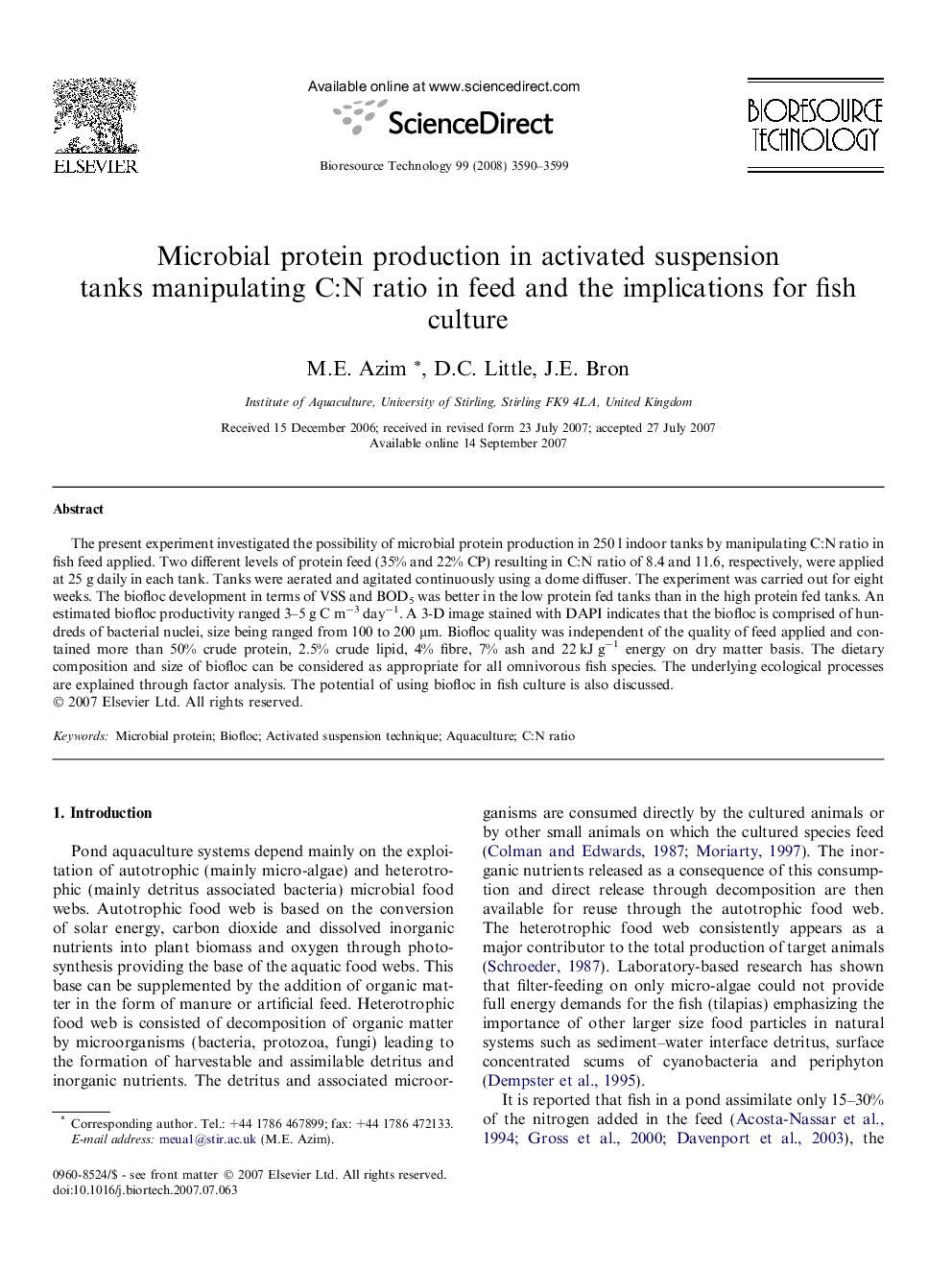| Article ID | Journal | Published Year | Pages | File Type |
|---|---|---|---|---|
| 686347 | Bioresource Technology | 2008 | 10 Pages |
The present experiment investigated the possibility of microbial protein production in 250 l indoor tanks by manipulating C:N ratio in fish feed applied. Two different levels of protein feed (35% and 22% CP) resulting in C:N ratio of 8.4 and 11.6, respectively, were applied at 25 g daily in each tank. Tanks were aerated and agitated continuously using a dome diffuser. The experiment was carried out for eight weeks. The biofloc development in terms of VSS and BOD5 was better in the low protein fed tanks than in the high protein fed tanks. An estimated biofloc productivity ranged 3–5 g C m−3 day−1. A 3-D image stained with DAPI indicates that the biofloc is comprised of hundreds of bacterial nuclei, size being ranged from 100 to 200 μm. Biofloc quality was independent of the quality of feed applied and contained more than 50% crude protein, 2.5% crude lipid, 4% fibre, 7% ash and 22 kJ g−1 energy on dry matter basis. The dietary composition and size of biofloc can be considered as appropriate for all omnivorous fish species. The underlying ecological processes are explained through factor analysis. The potential of using biofloc in fish culture is also discussed.
